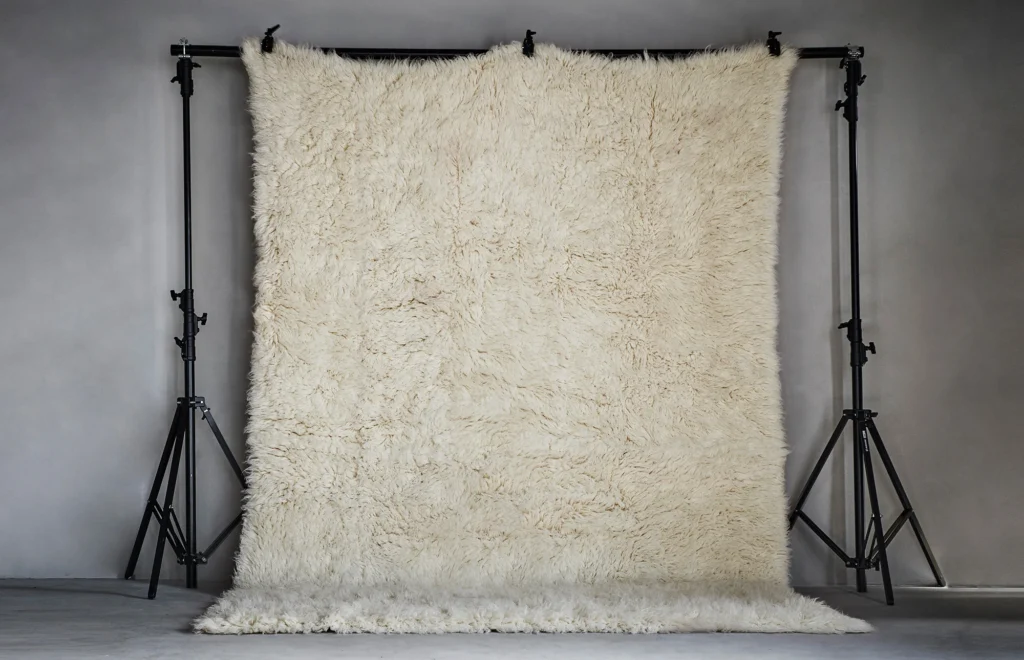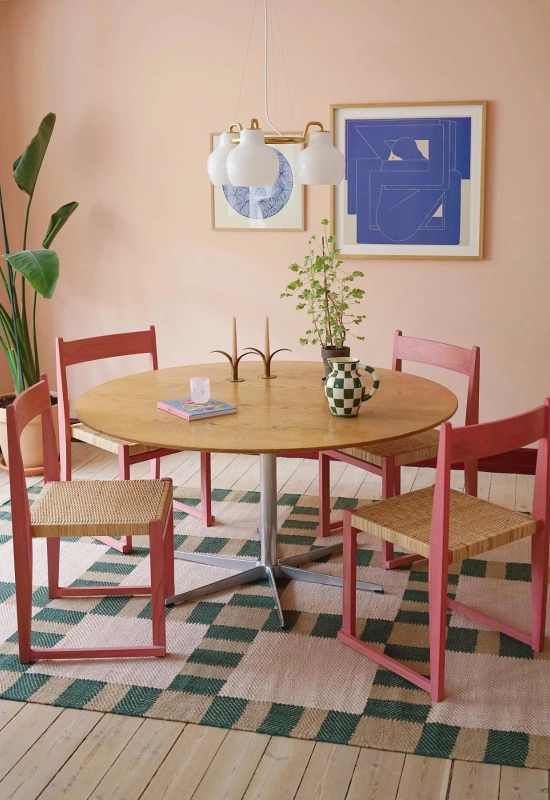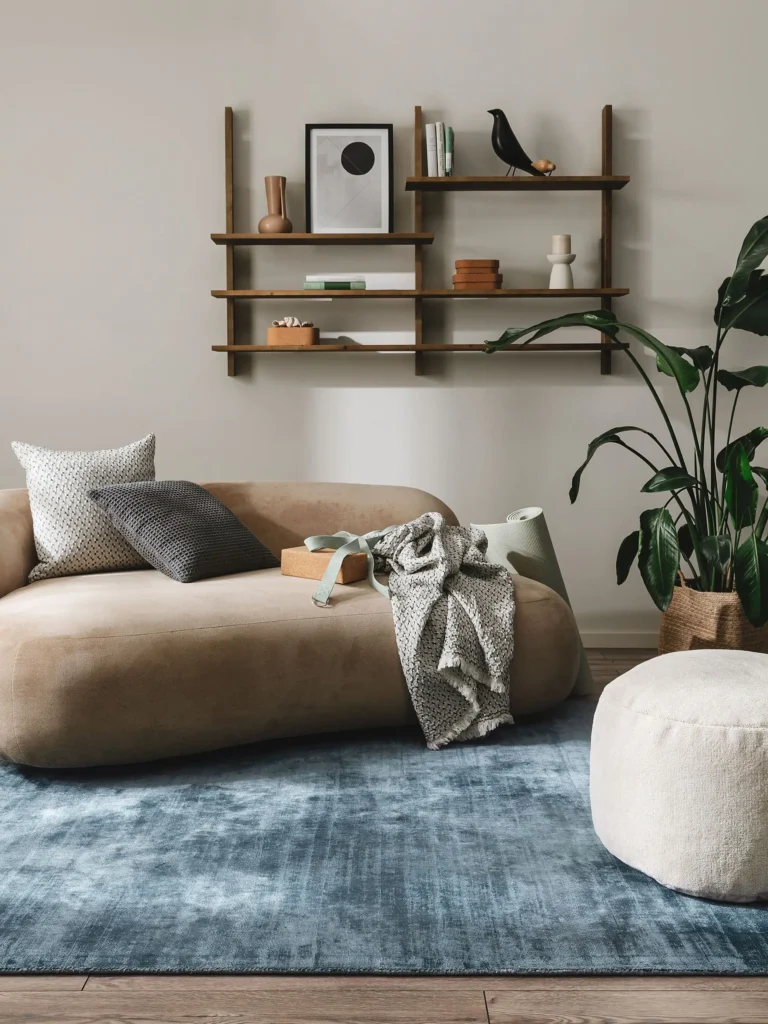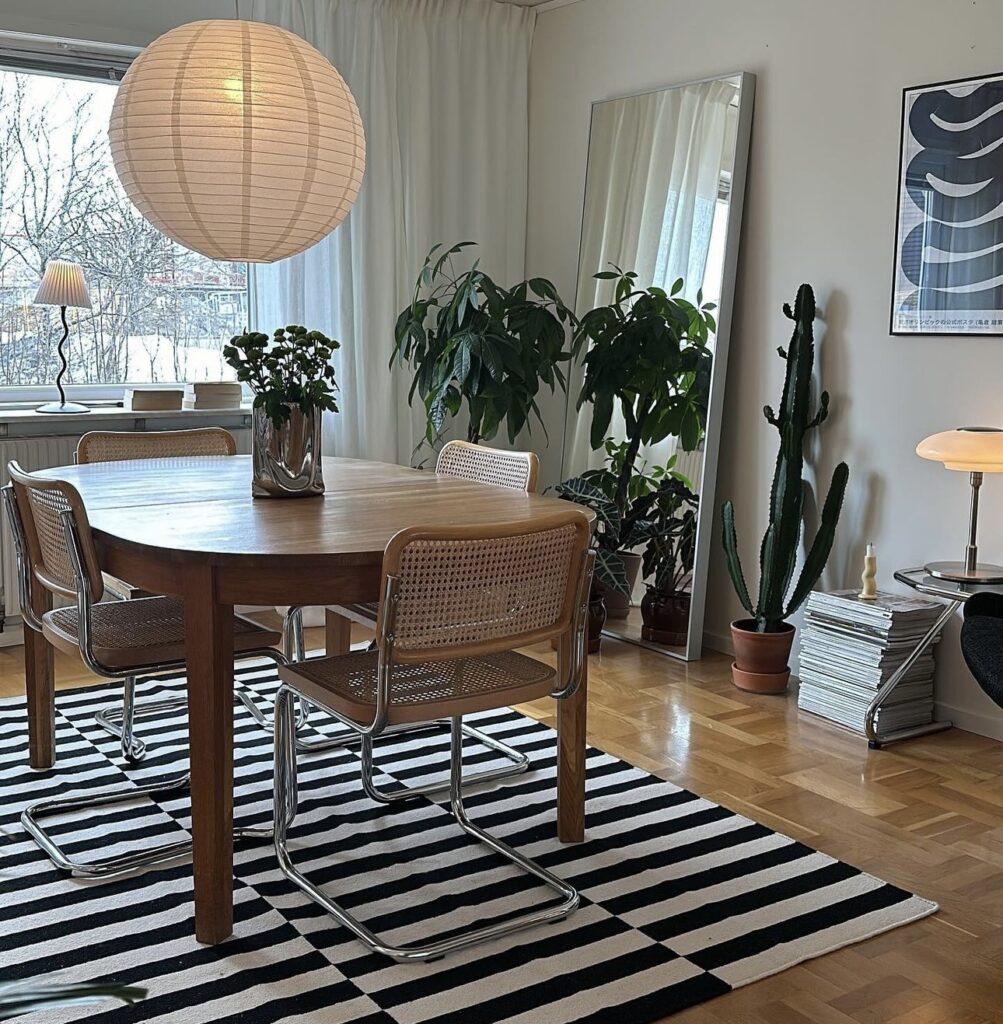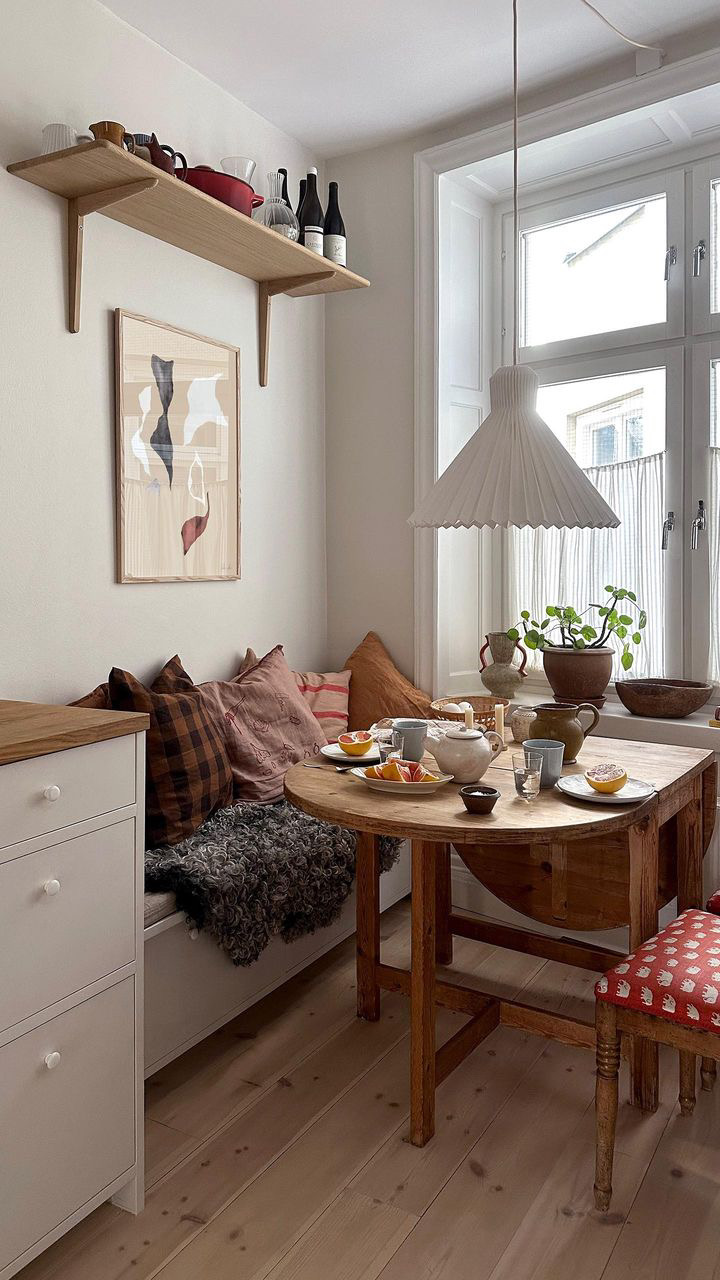This post contains adlinks.
Buying a rug is a big decision in interior design. It is often one of the larger investments you make in your decor, but it can also go completely wrong if you choose the wrong type of rug or the wrong size. In this guide, I have gathered various types of rugs, how to think about rug size, and some tips on how to place it. Enjoy, and let me know what your thoughts in the comments!
Types of rugs
When choosing a rug, it’s important to consider several different factors. How will the rug be used, in which room will it be placed, and what feeling should it create? Are there any problems it needs to solve?
For Example:
I’m looking for a soft bedroom rug that will create a cozy feeling and add warmth to the room. It should also act as soundproofing for our sound-sensitive house. I don’t mind much about it being easy to clean since we rarely make a mess in the bedroom.
Let’s go through some different types of rugs and their advantages and disadvantages.
Wool Rugs
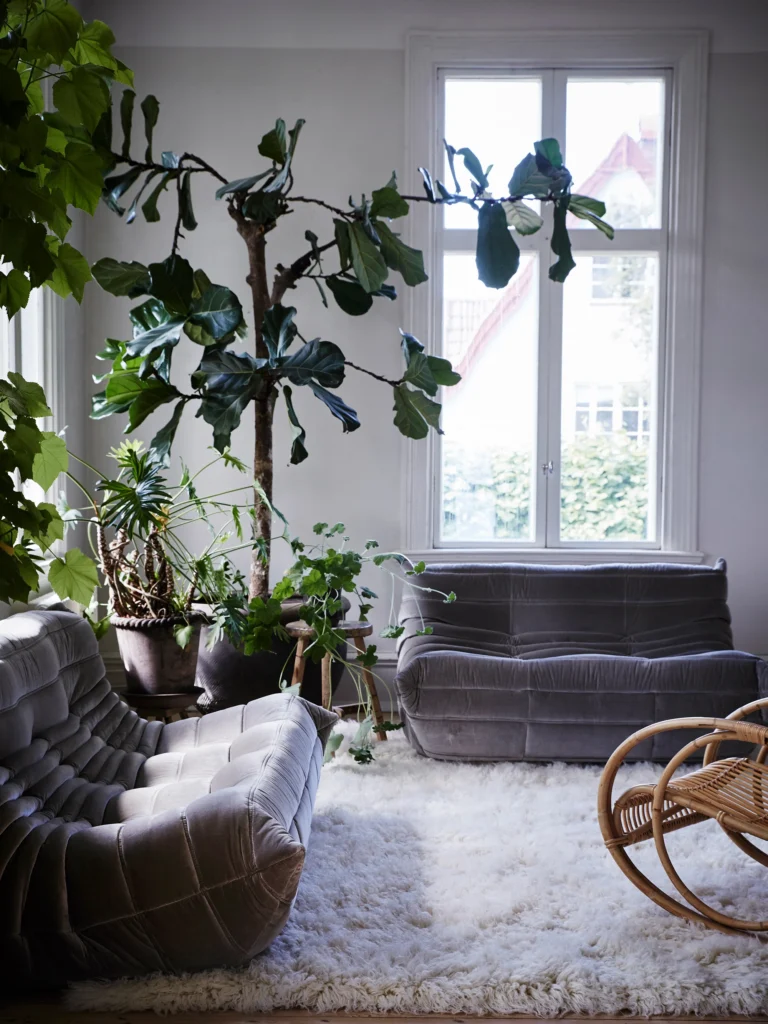
Wool is an incredibly good and natural material that you can greatly benefit from due to its natural properties. A wool rug can be excellent in the living room or bedroom; it adds a soft feel and is also naturally dirt-repellent and warm.
Wool rugs come in many different designs. If you choose a wool rug with a long pile, be prepared for it to shed some fluff, especially when it’s new. Make sure to vacuum it regularly, and it will eventually settle, but it’s an important detail to know, as some find the excessive shedding very frustrating.
A wool rug can also work well in the dining area, thanks to its natural dirt-repellent properties. However, avoid choosing a wool rug with a long pile for the dining area, as it’s rarely a good idea. We don’t want food crumbs getting lost in the rug.
A wool rug is a more sustainable option compared to, for example, a rug made of synthetic materials, but it also more expensive.
Jute and Sisal Rugs
Jute rugs and sisal rugs are fantastic options for creating an earthy feel in the home since they are made from natural materials and have a very natural look.
This type of rug is excellent for the dining room or even for the patio. They have a rustic appearance that can work wonderfully to balance a polished room or create a sense of nature indoors.
Synthetic Rugs
Synthetic rugs (for example, polyester) can be an option when you have a limited budget for your rug purchase or when you want to buy a rug that you don’t need to be too concerned about. They are perfect for a children’s room, for instance.
As mentioned, these rugs often come with a much lower price tag, but it’s good to know that they are not that durable.
Viscose Rugs
Viscose rugs are known for their shine and are often used to create a luxurious feel in a room. They are therefore most common in bedrooms, living rooms, or lounge areas. Viscose rugs can be somewhat more difficult to clean, which is something to keep in mind; therefore, it’s best not to choose one for a dining area, for example.
Flatweave Rugs
These rugs are easy to maintain and keep clean, with no pile to mess around or shed. They are elegant and can be vacuumed with ease.
If you want a rug that is simple to care for and easy to move around, I would recommend a flat-woven rug. They often come in exciting patterns and colors and fit perfectly in most room types.
Rug size guide
One of the most common mistakes I see when it comes to rugs is the size; many buy rugs that are far too small. Think bigger before you think smaller.
Of course, it can also go wrong the other way, but most often, it’s a case of a rug that is too small for a large room.
Many also think that a large rug would make the room feel smaller, but the fact is that the effect is quite the opposite.
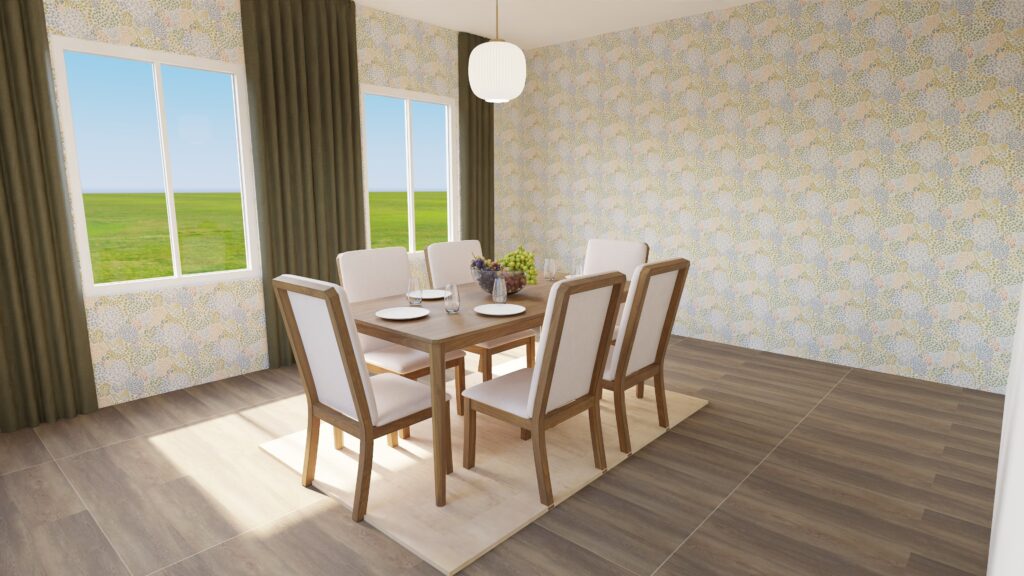
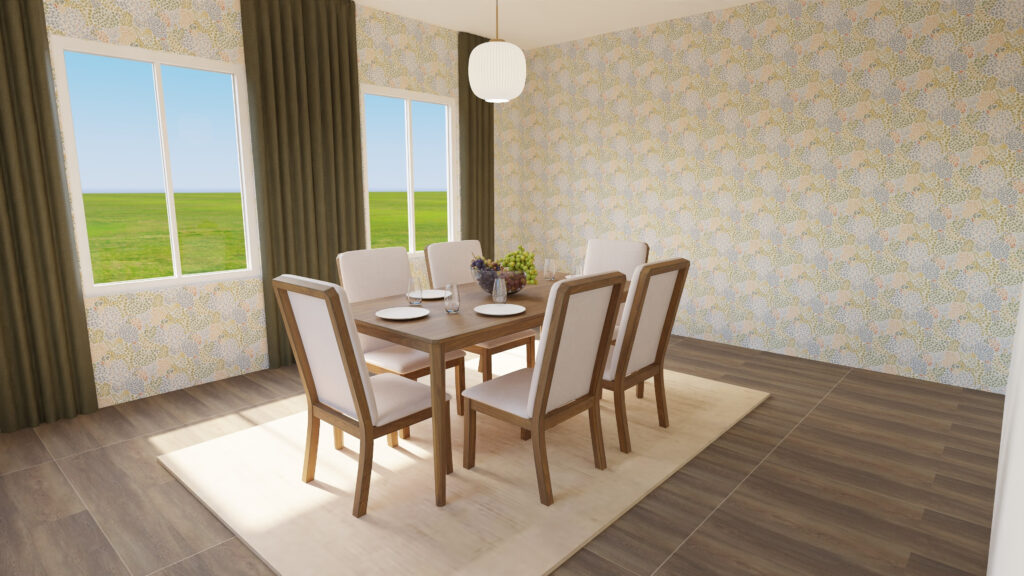
Are there any guidelines for how big a rug should be? Not really; it all depends on the room, so always start by measuring the space.
However, here are the most common sizes for each room. But as I said, these are general, make sure to adapt the size to your space.
- Living Room: 160×230 cm, 200×300 cm.
- Bedroom: 160×230 cm, 240×300 cm
- Dining Room: 200×300 cm or bigger depending on the size of your table.
If you are working with a big room and want it to feel cozier and more inviting, a rug is often a great solution to the problem; it can really help define the space.
Rug placement ideas
There is a rule of thumb that says all furniture in a ‘furniture group’ should fit on the rug. This means that both the dining table and chairs should be placed on the rug, and the chairs should be able to be pulled out without getting caught on an awkward edge.
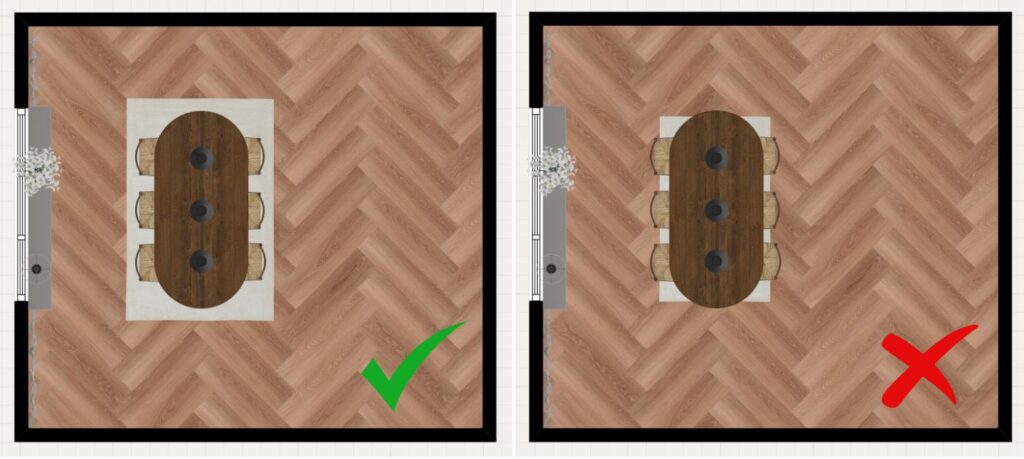
The same applies to the living room, where the sofa, coffee table, armchair, and side tables should fit on the rug. If that’s not possible, at least the front legs of the sofa and armchair should be on the rug to properly tie the group together. Otherwise, it can look unbalanced, and the furniture may appear too large for the room even if it isn’t.

A really good trick when it comes to rugs is to use them to create areas within a room. As I mentioned earlier with ‘furniture groups,’ you can create multiple groups/rooms within the same space and elegantly define them with rugs. This is perfect if you have an open floor plan, for example!


To summarize
A few final words: make sure to do the groundwork by arranging and measuring properly before you buy the rug. Be realistic so that you don’t have regrets later; is it practical to have a large wool rug in the living room when you have a crawling baby at home? Perhaps not.
But in general, choose a larger size than you think, and don’t forget that all furniture (or at least the front legs of the furniture) should be on the rug.
Good luck!

